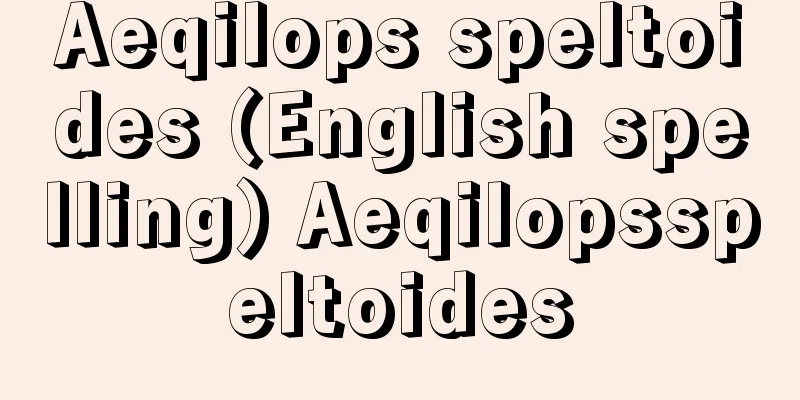Destroy - Destroy

|
This was the most violent form of conflict among farmers and city dwellers in the Edo period, in which people collectively destroyed houses, belongings, and tools. Although armed rebellions were also seen in the early Edo period, once the separation of soldiers and farmers was completed and the peasant lawsuit law was institutionalized, legal appeals began to spread. However, when the goal could not be achieved by this method, people would flee to other territories, or village officials would ignore the litigation procedures and appeal to higher authorities in a representative appeal (osso). Eventually, middle and lower class farmers joined the representative appeals of village officials, and they changed into strong appeals by the general peasants (soubyakusho). As a collective action, strong appeals were not limited to simply demanding that the lord reduce their burdens, but often involved destruction. An early example of this was the 1686 (Jokyo 3) uprising in Matsumoto Domain, Shinano (the Kasuke Uprising), where a small-scale takai appeared, but the 1712 (Shotoku 2) uprising in Daishoji Domain, Kaga, turned into a strong petition accompanied by takai on a domain-wide scale. After that, there were many peasant uprisings in which strong petitions and takai were combined. The dakai were not directed at the feudal lord's power, but at village officials who did not agree with the uprisings, those who colluded with or conspired with the feudal lord, those who drove out the peasants with high-interest loans, or those who inflated prices by buying up goods. They were also carried out by villagers, but sometimes they broke into castle towns to destroy them. Dakai was a violent punishment that the peasants carried out with their own hands, without the help of the feudal lord, against those they judged to be evil, and similar acts were seen during water disputes, etc. These actions were carried out using various tools, and the means of life and production were thoroughly destroyed, but the houses themselves were rarely destroyed, and there was no arson. In response to the farmers' raids, small merchants and general traders in cities, angry at the hoarding of rice and the soaring prices, attacked the homes of privileged merchants, resulting in raids of rice riots of the nature of rice riots. Early examples include the raids in Nagasaki in 1713 (Shotoku 3) and in Hida Takayama in 1731 (Kyoho 16), but the first large-scale raid was the raid on the home of rice wholesaler Takama Denbei in Edo in January 1733. After that, raids became more frequent in the three major cities and castle towns in years of poor harvests and famine, and were also seen in port towns and residential areas throughout the country. The raids by city residents were also a form of self-punishment against the monopoly of wealth, but in times of famine when rice prices were abnormally high, they were characterized by a chain reaction that occurred over a wide area. In particular, in 1787 (Tenmei 7), raids in cities occurred nationwide, to the point that Edo was in a state of anarchy. The attacks intensified during the Tenpo era (1830-44) and the Keio era (1865-68). In the attacks that occurred in towns, farmers and city dwellers responded to each other. [Katsumi Fukaya] "The Tradition of Peasant Revolts, by Hayashi Motoi (1955, 1971, Shinhyoronsha)" ▽ "The Historical Structure of Peasant Revolts, by Fukaya Katsumi (1979, Azekura Shobo)" ▽ "Reforming the World, by Sasaki Junnosuke (Iwanami Shinsho)" [References] | |Source: Shogakukan Encyclopedia Nipponica About Encyclopedia Nipponica Information | Legend |
|
家宅、家財、道具類を集団で破壊する、江戸時代の農民、都市民のもっとも激しい闘争形態。江戸時代の初頭には武力を用いる反乱もみられたが、兵農分離が完成する一方で百姓訴訟法が制度化されると、法に基づく訴願が広がり始めた。しかし、その方法によって目的が達せられないときは、他領に逃げたり、村役人が訴訟の手順を無視して上級の権力に訴える代表越訴(おっそ)の手段がとられた。村役人の代表越訴は、やがて中下層の農民が加わってきて惣百姓(そうびゃくしょう)の強訴(ごうそ)に変わった。集団的な行動である強訴は、領主に負担軽減を要求するだけに終わらず、打毀を伴うことが多かった。早い例としては1686年(貞享3)信濃(しなの)松本藩一揆(いっき)(加助(かすけ)騒動)に小規模な打毀が現れたが、1712年(正徳2)加賀大聖寺(だいしょうじ)藩一揆は、全藩規模の打毀を伴う強訴となった。以後、強訴と打毀が一体になった百姓一揆が多くなる。 打毀は領主権力に向けられるものではなく、一揆に同意しない村役人、領主と結託したり内通した者、高利の金融で百姓をとりつぶしたり買占めで物価をつり上げた者などに向けられた。村方でも行われたが、城下町へ押し入って打毀すこともあった。打毀は、農民が悪人と判定した者に対して、領主の力を借りずに自らの手で行う激しい制裁行為であり、水争いなどの際にも類似のものがみられた。この行動は種々の道具を用いて行われ、生活、生産の諸手段を徹底的に破壊したが、家屋そのものを倒壊させることはほとんどなく、放火が行われたこともなかった。 農民の打毀に対し、都市では、小商職人や雑業者が米の買占めや価格高騰に怒って特権的な商人宅を襲う、米騒動の性質をもつ打毀が起こった。早い例としては1713年(正徳3)長崎、31年(享保16)飛騨(ひだ)高山の打毀があるが、大規模なものは33年1月に江戸で起こった米問屋高間伝兵衛(たかまでんべえ)宅の打毀が最初である。以後、凶作、飢饉(ききん)の年には三都や城下町に頻発するようになり、各地の港町や在町(ざいまち)でもみられるようになった。都市民の打毀も富の独占に対する自らの手による制裁であったが、飢饉で米価が異常な高騰をみせる時期には、広域にわたって連鎖的に起こるのが特徴であった。ことに1787年(天明7)には全国的な広さで都市打毀が起こり、江戸は無政府状態になるほどであった。天保(てんぽう)年間(1830~44)、慶応(けいおう)年間(1865~68)にも打毀が激化した。また在町で起こる打毀では、農民と都市民が相呼応する形になった。 [深谷克己] 『林基著『百姓一揆の伝統』正続(1955、71・新評論社)』▽『深谷克己著『百姓一揆の歴史的構造』(1979・校倉書房)』▽『佐々木潤之介著『世直し』(岩波新書)』 [参照項目] | |出典 小学館 日本大百科全書(ニッポニカ)日本大百科全書(ニッポニカ)について 情報 | 凡例 |
<<: House moth - Smerinthus planus
>>: Princess Achiko - Princess Achiko
Recommend
Oshika Kabuki
Local Kabuki performed in Oshika Village, Shimoina...
petrofabric analysis
…also known as petrofabrics or petrofabric analys...
National Research Institute of Police Science
A central research institute attached to the Nati...
Vikramaditya I (English spelling)
...After that, conflicts between the two dynastie...
Head temple - Omotoyama
…In the Edo period, it was a general term for pro...
Stick - Uchizue
A prop used in Noh, Kyogen, and dance. It is used ...
Ono Gon'emon
A wealthy merchant in the early Edo period. A memb...
Association (social group)
...In the past, such individual health checkups w...
variable geometry wing
… A swept-back wing with a large sweep angle is a...
Jesuit's bark
…It is a medicinal tree of the Rubiaceae family, ...
William Tuke
1732‐1822 A merchant from York, England. A Quaker,...
Naishin - Chief Cabinet Secretary
〘Noun〙 An ancient government position in which the...
Śravaṇā (English spelling) Sravana
...Following the Vedic framework, these festivals...
Capital as a commodity
The commodification of capital does not refer to t...
Alkylation - Arukiruuka (English spelling) alkylation
It usually refers to a reaction in which an alkyl...



![Yumura [Hot Spring] - Yumura](/upload/images/67cd153e1f935.webp)




![Mimasaka [town] - Mimasaka](/upload/images/67ccf59c0e0b3.webp)
